
“Ring of Fire” Sunflower from benary.com
The love of gardening is a seed that once sown, never dies. ~Gertrude Jekyll
The days are warming up rapidly, so let’s garden before the heat gets here. While waiting for seeds to sprout and bloom, add immediate splashes of color to outdoor areas with purchased annuals that are in bloom; the selection is getting larger daily. They can be placed in hanging baskets, into decorative pots, or planted directly into the ground. Some currenty available are petunias, pentas, wax-leaf begonias, geraniums, and Gerbera daisies.
- Sunflowers (Helianthus annuus) love our Texas heat, and now is the time to seed them, as they need around 90 days to bloom. “Ring of Fire” (photo above) plants may reach 4-to-5 feet tall, spreading 2-to-3 feet. It is heavily branched with long side stems ending in 5-inch blooms, making it perfect for cut flowers. This is one of the many tall varieties that need a large, sunny garden. As Sunflowers can be found in a huge variety of sizes, and in an unbelievable array of colors and color combinations, it is worth doing a bit of research to find some that are perfect for your needs. All sunflowers need full sun and well-drained soil; they support bees, butterflies, hummingbirds, and other pollinators with their nectar. They are, unfortunately, a favorite of deer!
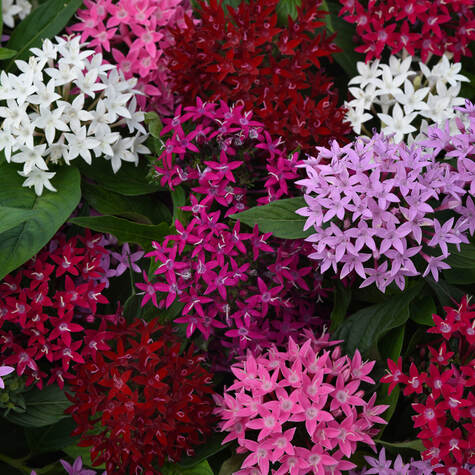
Pentas, color mix from ParkSeed.com
- Pentas (Pentas lanceolata) are heat-loving, perennial flowers that can grow into a 2-to-3 foot tall and wide shrub, with up to 20 clusters of large, intensely colored flower clusters on a single plant. Pentas are low maintenance, do best in full sun, with well-drained soil, and will provide pollinator-friendly color from late spring into fall. The tall varieties like the Northern Lights series, can reach almost 3-feet tall and wide, while the Lucky Star series are compact, perhaps 12-to-16 inches tall and wide; these are excellent for containers and bed edges. Mulch them well in the summer months, and water regularly. They can be seeded now, propagated from cuttings, or purchased from garden stores as transplants. Pentas are especially loved by hummingbirds and by Swallow-tail butterflies. (Twenty species of Swallowtail butterflies have been recorded in Texas, according to the Alamo area chapter, Texas Master Naturalist™.)
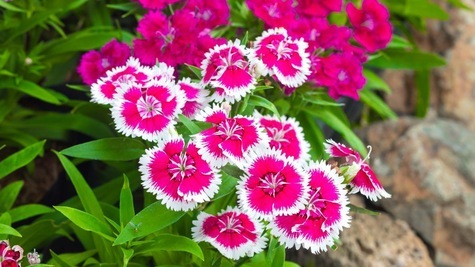
Dianthus from almanac.com
- Dianthus (dianthus plumarius) is a small delicate flower related to carnations, and is often called Sweet William, or Pinks. The usual height is about 6” tall, but new varieties can reach up to 18” tall, and are available in a stunning variety of colors from white to burgundy, most with frilly edges. They will fill an expanse of yard as groundcover, a container or the edge of a flower bed with lightly scented blossoms from spring through fall. Dianthus prefer loose soil, morning sun only, and regular watering, preferably in the morning. Deadhead first blooms to insure a second bloom later. Zones 3-9. ” For more information on Dianthus, see “Featured Plant” by CMG Kathleen S. on the HOME page of this issue or by clicking here.
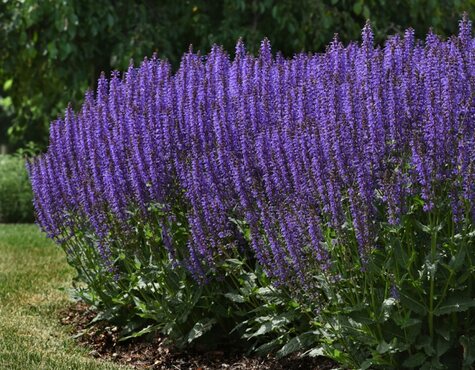
Salvia “Blue By You” from StarRosesandPlants.com
- Salvias, also known as Sages, are another sun loving plant for our area. Many of them bloom through summer and well into fall, supporting bees, butterflies, and hummingbirds with their nectar. The old varieties are constantly being improved to maintain more intensive colors, and to produce more flower spikes, blooming throughout spring and summer. Salvias can grow from 4-to-5 feet tall, and make a stunning showing when planted en masse. Red “Flare” and “Victoria Blue” are recent issues of intense colors from Burpee Seeds.
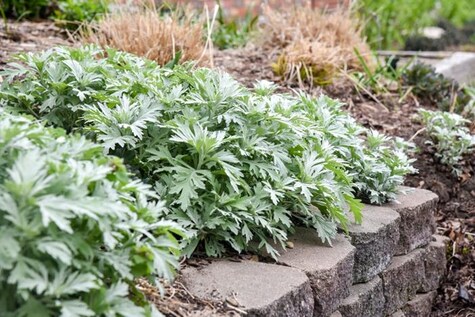
Artemisia “Silver Lining” from ProvenWinners.com
- Artemisia “Silver Lining White” is a 2024 hybrid release from Proven Winners. This perennial has a mounding habit, reaching 12-16 inches with a 3-foot spread. It needs full sun and neutral soil, making it easy to grow in our area. Use it to front a bed of colorful flowers, or to soften any hard edges. It can be grown alone in a container or used as an accent in a combination arrangement. Planted around a bed of tender annuals or vegetables, it can be a deterrent to deer, who do not like its scent. The larger varieties of Artemisia are called Sagebrush in our dryer, western states. Zones 4-9.
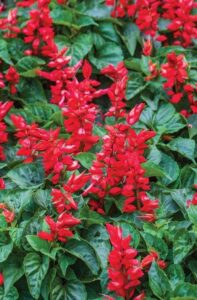
Salvia “Flare” from Burpee.com
- Fertilize and prune shrubs before their spring growth. Remove some of the interior branches to provide more sunlight for stimulating new growth. Remember that early bloomers such as Althea and Indian Hawthorn, and some vines, may have already set their buds, and should not be pruned now. Fertilize dormant perennials with slow-release granular late in the month or as they leaf out.
- Lawns can be stressed if April is sunny and dry. Watering deeply in the evenings can be beneficial and will keep tender new sprouts from becoming scorched.
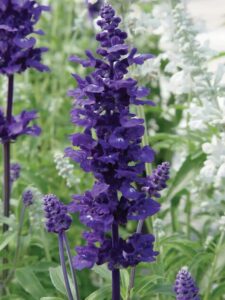
“Victoria Blue” Salvia from Burpee.com
- Ready your tools now for working in the yard and garden instead of waiting for an emergency. Sharpen the blades on lawnmowers, overhead trimmers, shovels, hand pruners and shears. Check ladders, electrical tools and cords, outdoor lighting, and garden paths for safety. Oil the squeaky wheels on that rusty yard cart and remember to change the washers on hoses and hand-held attachments to help prevent unwanted showers.
- Perform a safety check on patios and other outside areas. Look for loose or uneven paving stones, re-grade any gravel paths that have become uneven, replace burned lightbulbs, and check that all electric wiring and connectors are working properly, and are water-proofed where needed. Survey yard supplies and make a list before shopping; include protective items such as gloves and hats, sunscreen, and a first-aid kit.
By CMG Adrienne
Sources, these sites and others: Gardenia.net; thespruce.com; SouthernLiving.com; aggie-horticultural.tamu.edu; BallHorticultural.com; Benary.com; CentralTexasGardener.com; ProvenWinners.com. Mississippi State University Extension.